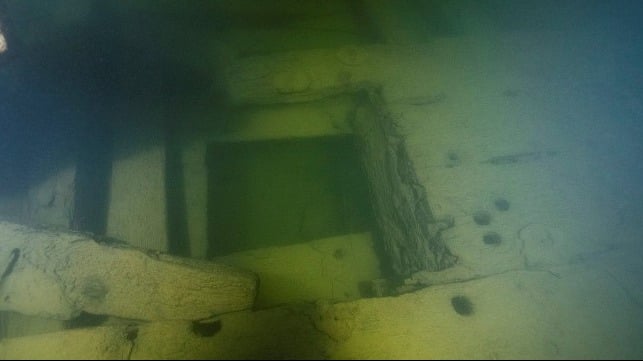Sweden Finds 17th Century Warship, Sister to the Famed Vasa

Maritime archaeologists from Sweden’s Vrak (Museum of Wrecks) have discovered the wreck of a 17th century warship that they believe will provide new insights both into the country’s history and the history of shipbuilding. The vessel, known as the Äpplet, is a sister ship to Sweden’s most famous historical warship the Vasa, which sank on its maiden voyage in 1628. Launched in 1629, the Äpplet was built by the same shipbuilder as the Vasa.
In 1625, King Gustav II Adolf ordered four warships to be built which would be among the largest ever created and show the might of Sweden. Two of the vessels were to be larger ships destined to become the Vasa and the Äpplet, while the other two were slightly smaller in dimension.
The 1,200-ton Vasa completed three years later measured 226 feet in length (including her bowsprit) with a beam of just 38 feet and a draft of 16 feet. Fully laden including 64 cannons, the massive ship set sail in Stockholm harbor, and to the horror of onlookers the ship heeled over when she was caught by strong gusts of wind. The second time it happened her open gun ports began to flood and the vessel sank claiming 30 lives. In the early 1960s, Sweden salvaged the Vasa and built a museum to display the ship.
According to the historians, shipbuilder Hein Jacobsson suspected that Vasa had been built too narrow and was therefore likely to be unstable. So the Äpplet was built wider, with a slightly different hull shape. She was completed in 1629 seeing service in the Thirty Years’ War carrying nearly 1,000 sailors and soldiers to Germany. The historians speculate that after the war she was probably idle as her large size made her more difficult to maneuver and more costly to maintain and operate. The Äpplet was sunk by Sweden in 1659 to create an underwater barrier to block an enemy invasion of Stockholm by sea.
On several occasions, the museum’s maritime archaeologists collaborated with the navy to survey the area where they believed the ship was sunk. In 2019, the museum’s maritime archaeologists found two shipwrecks in the area and thought they had finally located the Äpplet. Later research however showed that they were two smaller medium-sized ships from 1648.
The archaeologists said they refused to give up and continued their search. In December 2021, a huge shipwreck was discovered. Parts of the ship’s sides had fallen to the bottom of the sea, but the hull was otherwise preserved up to a lower gun deck. The fallen sides had portholes on two different levels, evidence of a warship with two gun decks.
“Our pulses spiked when we saw how similar the wreck was to Vasa,” says Jim Hansson, maritime archaeologist at the museum. “Both the construction and the powerful dimensions seemed very familiar. The hope of finding one of Vasa’s sister ships was sparked within us.”
A second more thorough survey was conducted in the spring of 2022. During those dives, ship details were found that had so far only been seen in Vasa, and several samples and analyses were made. It emerged that the oak for the ship’s timber was felled in 1627 in the same place as Vasa’s timber just a few years earlier.
“The dimensions, construction details, wood samples, and archival material all pointed in the same direction – amazingly, we had found Vasa’s sister ship Äpplet,” says Patrik Höglund, another maritime archaeologist at the museum. Measurement data, the ship’s technical details, wood samples, and archival data confirmed that it is indeed Vasa’s sister ship, the Äpplet.
“With Äpplet, we can add another key piece of the puzzle in the development of Swedish shipbuilding,” Hansson says. “And it’s only now that we can really study the differences in the constructions of Vasa and Äpplet.”

that matters most
Get the latest maritime news delivered to your inbox daily.
The museum’s team is confident that their analysis of the wreck will help with the understanding of how the large warships evolved, from the unstable Vasa to seaworthy behemoths that could control the Baltic Sea.
The team will be conducting a further briefing and revealing more pictures during a presentation on October 26. It will be broadcast live online. A short video is available on the museum's website of the discovery.
